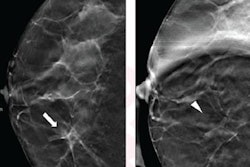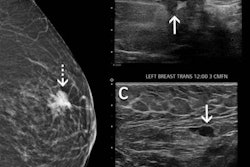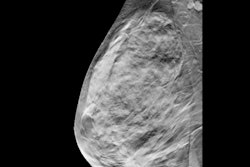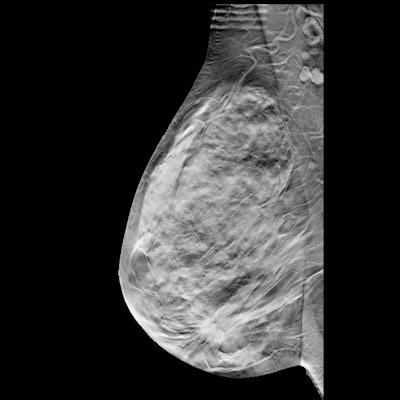
Time-of-day effects for recall and false-positive rates in digital breast tomosynthesis (DBT) interpretation declined during the COVID-19 pandemic, according to research presented at the RSNA annual meeting.
Grayson Baird, PhD, from Rhode Island Hospital and Brown University presented results from his team's study of nearly 150,000 DBT and mammography exams. The group found that DBT could alleviate fatigue for radiologists.
"Lower interpretation volumes, as observed during COVID-19, may reduce recall and false-positive rates in DBT without affecting true-positive rates," Baird said.
Previous research suggests that fatigue inhibits performance, with studies examining performance at different times of the day. Research has also suggested that the time of day affects performance and decision-making in the medical field.
"For example, physicians are more likely to order breast cancer screens during a morning visit," Baird said.
For radiologists, accuracy is higher when image readings occur earlier than later in the day. And increased workload volume increases errors and fatigue, Baird said.
DBT has shown promise in recent years as providing "much greater" detail than conventional mammography by reconstructing breast imaging into hundreds of images per screening study. However, with more images comes more imaging volume for radiologists, which may increase fatigue.
Previous research also suggests that recall and false-positive rates increase as a function of the time of day, with increases being more pronounced when using DBT.
Baird et al wanted to see if a correlation exists between recall and false-positive rates with caseload volumes due to the disruption of COVID-19 on practices, as well as if such a correlation is different between DBT and mammography. They also wanted to look at whether this correlation between time of day and recall and false-positive rates is moderated by caseload volume, as well as differences between screening methods.
The team retrospectively looked at 149,947 screening DBT and mammography exams between May 2018 and May 2021, before and during the pandemic. The exams come from 13 outpatient centers and 19 radiologists doing batch reading.
The researchers found that while seasonal trends were amplified during the pandemic, fewer cases were seen during shutdowns. However, caseloads increased after reopening.
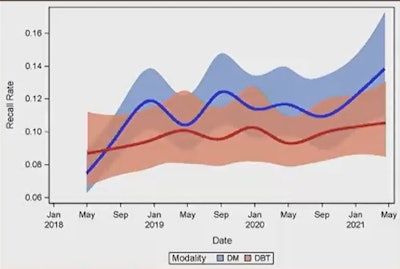 Similar trends were seen for both recall rates (above) and false-positive rates (below) for DBT and mammography before and during the COVID-19 pandemic, according to research led by Grayson Baird, PhD, from Rhode Island Hospital and Brown University. While recall and false-positive rates for mammography mirrored caseload volumes, the rates for DBT do not, suggesting that high caseload volumes may not greatly affect these rates for DBT. FP = false positive. DM = digital mammography. Image courtesy of Grayson Baird, PhD.
Similar trends were seen for both recall rates (above) and false-positive rates (below) for DBT and mammography before and during the COVID-19 pandemic, according to research led by Grayson Baird, PhD, from Rhode Island Hospital and Brown University. While recall and false-positive rates for mammography mirrored caseload volumes, the rates for DBT do not, suggesting that high caseload volumes may not greatly affect these rates for DBT. FP = false positive. DM = digital mammography. Image courtesy of Grayson Baird, PhD.Before COVID-19, for every hour increase during the day, the odds of recall increased by 4% for DBT but not for mammography. However, during the pandemic, the odds of recall were flat for both imaging methods for every hour increase.
A similar trend was seen for false-positive rates. The odds of false-positive exams for every hour increased by 3.5% for DBT exams before the pandemic, while mammography remained flat. During the pandemic, those odds were flat for both DBT and mammography.
However, the recall rate and false-positive rate for DBT between 2018 and 2021 was lower than mammography. However, Baird pointed out that while both rates for mammography mirror caseload volumes, the rates for DBT do not.
"These results indicate that high caseload volumes may not greatly affect recall and false-positive rates for DBT," Baird said.
Baird also said that because these rates increased during high caseload volumes for mammography, it is possible that DBT mitigates cognitive fatigue and load in radiologists caused by high caseload volumes, translating into fewer false-positive exams.
He also called for more experimental research manipulating modality and caseload volume to verify this possibility.





